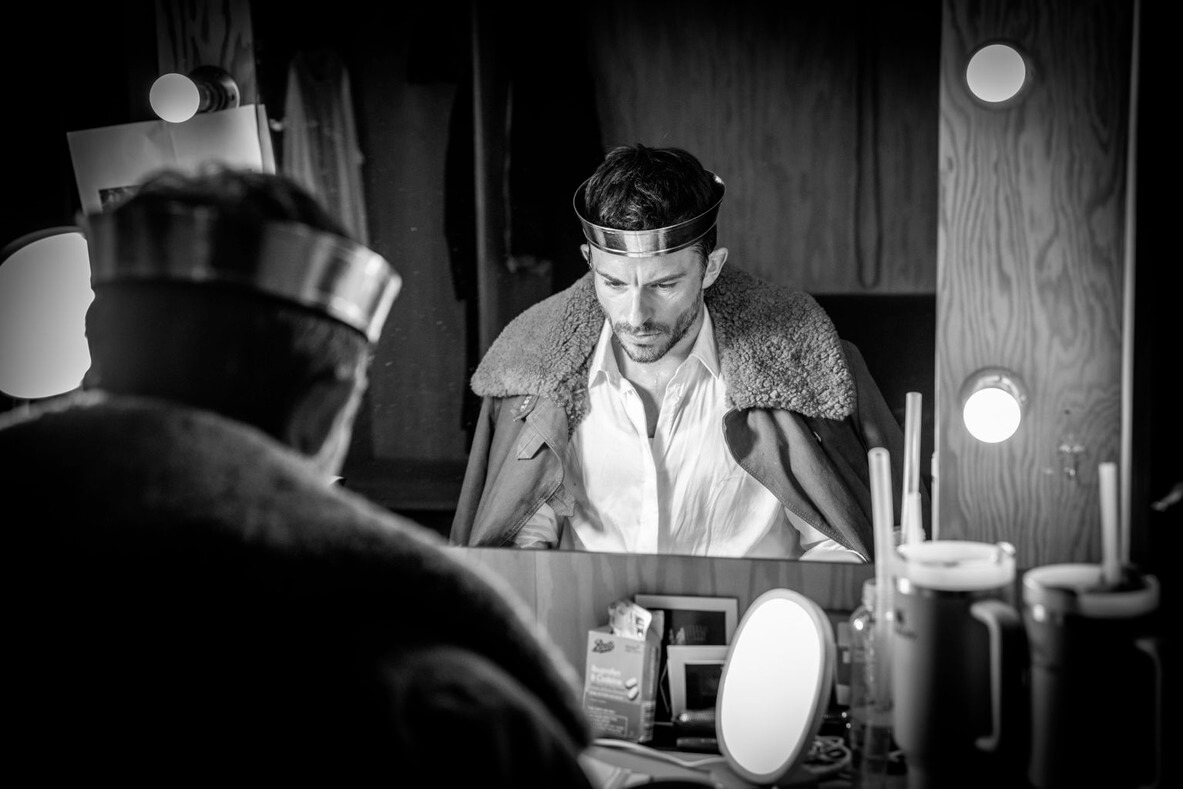Britten in Brooklyn is set in 1940-41 during a period when the composer, Benjamin Britten, and poet, W.H. Auden, lived together at 7 Middagh Street. The flat was one of many in Brooklyn Heights that provided a safe haven for artists during the war. This production introduces us to two other artists - Gypsy Rose Lee, acclaimed burlesque star, and novelist Carson McCullers - who also inhabit the space.
Zoe Lewis’ piece has two central interests: the psychological difficulties of being an artist during the war and the lives of an ensemble of artists pursuing bohemianism and hedonism under the same roof.
The former of these interests is quite fascinating on face-value — how should we judge these artists who choose not to fight with guns but with pens, bottles, dancing, sex, voices, music etc; is there some justification for saving these great creative minds from the savagery and likely death of war; or is it more beneficial for them to be saved to document the savagery of war for future generations?
Unfortunately, we never particularly care about any of the characters and therefore we don’t feel provoked to consider their lives in the context of the Second World War. They appear hollow, unbelievable individuals. There is a lot of exposition of who these people are, but not a lot of actual drama playing out where we can lean in and behold them as human beings; long autobiographical scenes play out where Ryan Sampson’s Britten is simply a muse to another character exposing how hedonistic and artistic they are.
On that note, the second aim of presenting the hedonistic nature of their lives also doesn’t quite land. The tricky thing about doing a show that aims to present a bohemian and hedonistic environment is that you really have to nail the atmosphere of dangerous, joyous, free fun on stage. As an audience we should either want to jump on stage and get involved because it looks so fun, or we should be totally appalled by the collateral damage of the fun-seeking. Unfortunately, there were many moments where it felt like the hedonistic quality of the house was being exposed to us as opposed to being actually lived out upon the stage. This gave the whole piece a straining feel, and made it a little awkward to behold. It was organised fun.
Furthermore, Oli Rose was dealt an unenviable, almost insurmountable task. The grandeur and vastness of the venue cries out to be filled with music and a large ensemble, but punished this smaller, mainly spoken production. When Sampson, at the beginning of the piece, takes to the front of the stage to conduct a piece of orchestral music the potential for this to be a grand piece of theatre is on the cards. However, the stage was mainly occupied by four actors and that made the majority of the stage seem distinctly unpopulated, empty and as if they had planned for more people to show up but they hadn’t. The venue also is fairly unforgiving to the spoken voice —the night was littered with projection issues where words were lost to echo.
This production didn’t work for me, but there’s a lot in it that makes me think it could be reincarnated as a really exciting piece of theatre. If that ever happens I really hope it is on a much larger-scale in the same venue, or readapted for a smaller one because that might make it a party worth attending.

 I was very excited about this production. One of the best theatre experiences i’ve ever had was an Oli Rose production at Hoxton Hall seven years ago; leading-man Ryan Sampson (Britten) is one of the most versatile young actors around (I loved him in the musical From Here to Eternity and his Grumio, in TV show Plebs, is one of the great comedic incarnations of my recent memory); and Wilton Music Hall is one of the most beautiful venues i’ve seen outside the West End.
I was very excited about this production. One of the best theatre experiences i’ve ever had was an Oli Rose production at Hoxton Hall seven years ago; leading-man Ryan Sampson (Britten) is one of the most versatile young actors around (I loved him in the musical From Here to Eternity and his Grumio, in TV show Plebs, is one of the great comedic incarnations of my recent memory); and Wilton Music Hall is one of the most beautiful venues i’ve seen outside the West End.



 FOUND111 is a beautifully intimate pop up theatre in the centre of London’s West End and is the perfect venue for the London Premiere of Unfaithful, a relatively new play by Owen McCafferty, which was first commissioned at The Traverse Theatre in 2014.
FOUND111 is a beautifully intimate pop up theatre in the centre of London’s West End and is the perfect venue for the London Premiere of Unfaithful, a relatively new play by Owen McCafferty, which was first commissioned at The Traverse Theatre in 2014.